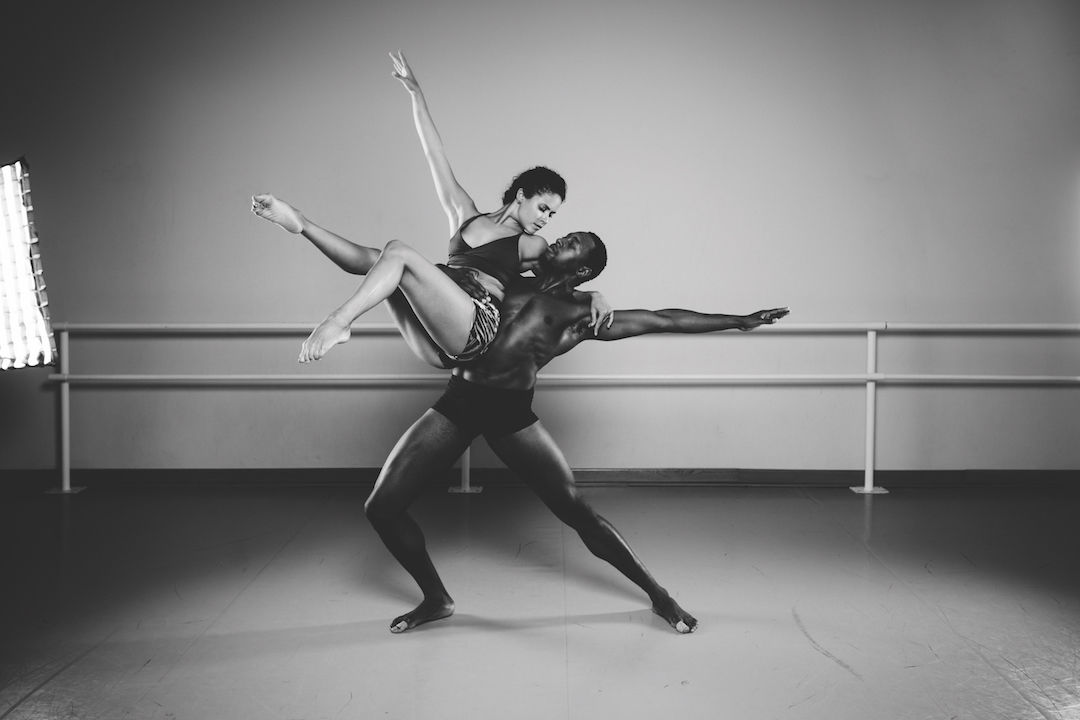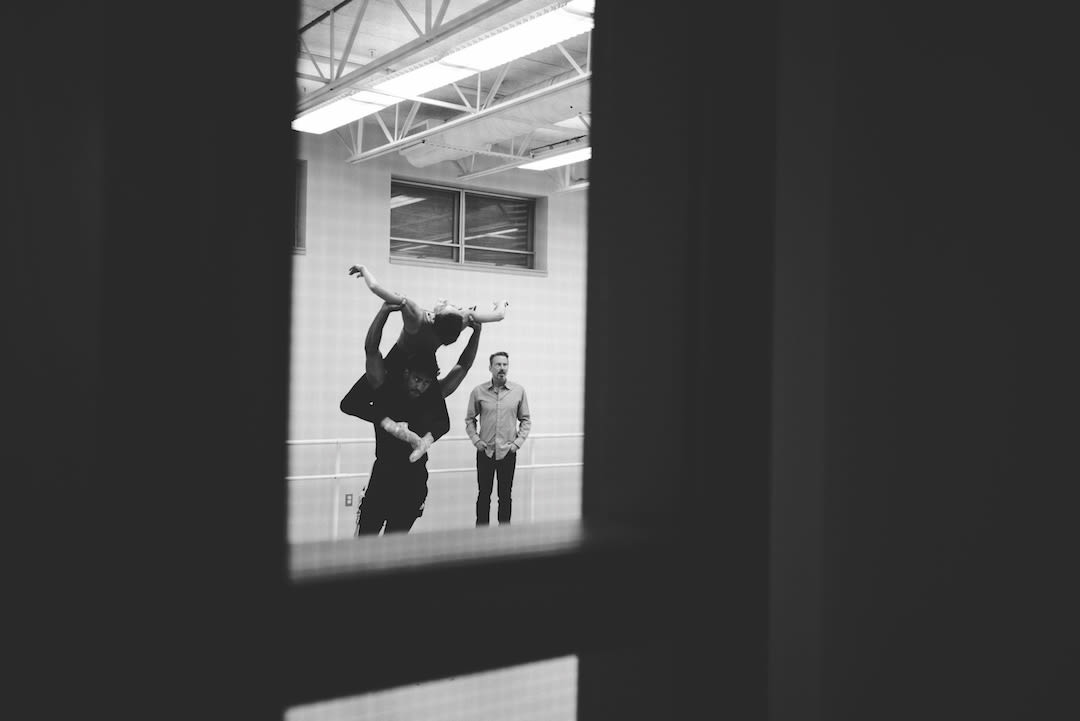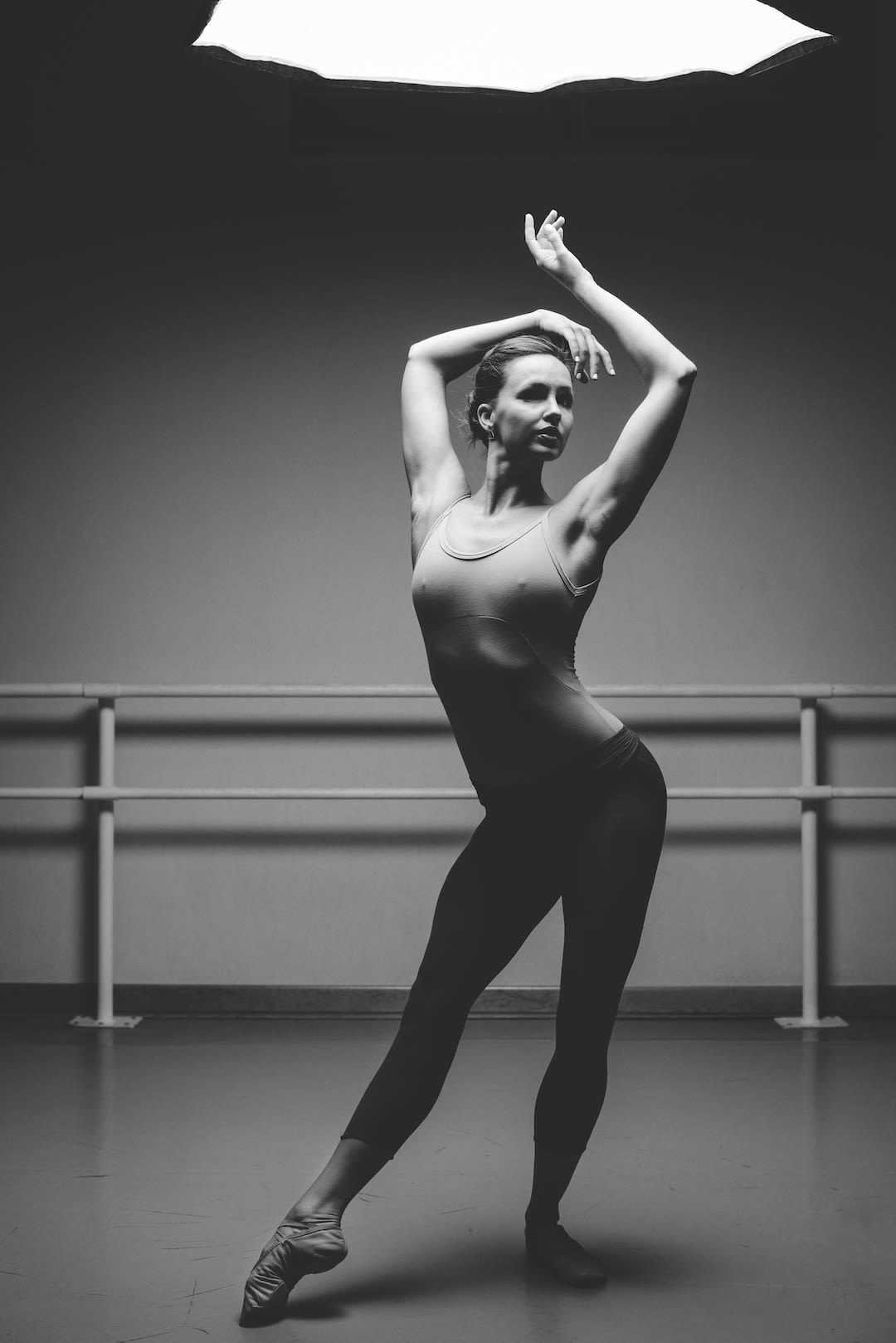
Raising the Barre: Aspen Santa Fe Ballet Reflects on 20 Years of Contemporary Dance
When Aspen Santa Fe Ballet executive director Jean-Philippe Malaty and artistic director Tom Mossbrucker sat down to decide the program for the company’s current 20th anniversary season, they considered a retrospective—but only briefly.
Instead, the forward-looking company commissioned even more works than usual. The directors invited back several choreographers with whom they have developed a relationship over the years, as well as extended a first-time invitation to rising star Fernando Melo. Also incorporating existing pieces, including a recent work by contemporary dance master Jiří Kylián, this season’s programming captures ASFB’s essence: fresh, challenging, physical, and diverse.
That essence is due largely to Malaty and Mossbrucker, who have been with the company since the beginning. In 1995, as dancers with New York City’s Joffrey Ballet, the two came to Vail for a dance festival. There they met Bebe Schweppe, who had just founded the Aspen Ballet Company and School but didn’t actually have a company—yet.
The three immediately clicked, and Schweppe invited the two dancers to teach in her fledgling school. When they came to Aspen, she had an unexpected proposition. “Bebe sat us down and said, ‘I have a dream for a professional ballet company in Aspen,’” Mossbrucker recalls. “And we said, ‘Oh, that sounds wonderful. Good luck to you.’ And she said, ‘No, I want you guys to do it.’”
Schweppe acknowledges the request was unusual. But to hear her tell it, the decision was fairly spontaneous. “I’d like to say there was some sort of plan,” she says. “But we just hit it off personality-wise and vision-wise. They had the energy, and it just came together.”
Malaty admits that he and Mossbrucker needed some convincing. What eventually inspired the two to accept Schweppe’s offer was the desire to create from scratch a different kind of company. “At the time, we realized that most dance companies were very dysfunctional in many ways—artistically, emotionally, financially—so we kept thinking there must be a better way to run one,” he says. “That became our motivation: to come here and break the cycle and start something new. That desire to create a healthy environment, where dancers could thrive, really became the driver.”
Once they agreed to start the company in 1996, Malaty says he felt only excited, never nervous. “Ignorance is bliss,” he says with a laugh.
ON THE ROAD
Even today, with 12 dancers, ASFB is small compared to other companies of its caliber. In the early days it was even smaller, with a roster of seven. Some of the dancers were already friends of Malaty and Mossbrucker, a couple came from Schweppe’s school, and others came through dance-world connections. Most were making their professional debuts—they needed more experience performing.
At that time, the company’s home theater was Aspen’s historic Wheeler Opera House, and the stage was just big enough to accommodate a half-dozen dancers. The troupe also traveled all over Colorado, primarily to small towns. “Literally, we would look on the map and say, ‘I wonder if they have a theater there,” says Mossbrucker. “There were some theaters where the roofs were leaking; there were theaters where you had to walk outside to get to the dressing room.”
The casual vibe of some of these venues was not exactly Lincoln Center. Malaty recalls one early performance where audience members were eating ice cream in the front row. But the grassroots efforts paid off. “We would just go in and put on a show,” Mossbrucker says. “And the dancers really learned their craft.”
One of those dancers was Samantha Klanac Campanile, who joined the company when she was 19 and is retiring this fall after her 15th season. Those early tours across the state were some of the most memorable for her. “Sometimes it’s the shows that happen in the not-so-great theaters on the road that [give] you the most magical experiences,” she says.
Malaty and Mossbrucker knew what they were doing as they exposed small towns around the state to the beauty of ballet and simultaneously trained their dancers to become high-caliber performers. After four years, the company was ready to expand.

Company dancers Pete Leo Walker and Katherine Bolaños rehearse with ASFB artistic director Tom Mossbrucker.
Image: Ryan Dearth
TALE OF TWO CITIES
In 2000, the Aspen Ballet Company adopted a two-city model, becaming the Aspen Santa Fe Ballet.
“It’s been done before,” Malaty says of the company’s dual homes. “Especially in the ’80s, it was a very popular thing to do for arts organizations. We might have perfected it, or we might have found the right way to do it, or it might have just worked for us better than for other people. I don’t know, but we’re the only one doing it now.”
The expansion came out of necessity. Although Aspen had embraced the company, says Malaty, off-seasons posed a challenge in attracting audiences. Malaty and Mossbrucker searched for the perfect second home, looking for a city within driving distance that matched Aspen’s brand and cultural reputation. It also had to be without a professional dance company. Eventually, they chose Santa Fe.
“Santa Fe has a very rich visual arts community and a world-class opera, but the whole state of New Mexico has had no professional dance to this day except for us,” Malaty says. “Santa Fe is also a very forward-looking town. At the time, we already started to have a little bit of an identity, or at least an idea of a direction we were going.”
CREATIVE INCUBATOR
From the beginning, the ballet has forged a reputation for presenting innovative new works. “That became the strength of the artistic vision,” says Malaty. “It’s why this company is now well-known in the field.”
That vision was originally developed for practical reasons. In the early years of the Aspen Ballet Company, Malaty and Mossbrucker needed to bring in outside choreographers to create pieces. Neither choreographed himself, and finding existing work for a company of seven was difficult. But the two realized very quickly that utilizing a variety of up-and-coming choreographers made for better dancers, and the process soon became about more than just necessity.
“It happened first with Dwight Rhoden,” says Mossbrucker. “He was the first choreographer we invited to commission a work, and the piece was really challenging. After two months with Dwight, it was a different company.”
Twenty years later, ASFB has commissioned 31 works in all by 14 choreographers, many of whom got their first gig with the company. Malaty’s and Mossbrucker’s eyes for talent are impeccable, and many choreographers who were relatively unknown at the time of their first ASFB commissions have gone on to great success.
American choreographer Nicolo Fonte, who danced in Spain, was another ASFB find. “We were the first company in the country not only to bring him back to the States, but to commission a new work,” Malaty says. Since then, Fonte has choreographed eight ballets for ASFB and is considered one of the hottest contemporary choreographers around.
Other discoveries include Jorma Elo, now the resident choreographer of the Boston Ballet, and Cayetano Soto, now the resident choreographer of Ballet British Columbia in Vancouver. That legacy has bred high expectations. Adds Malaty, “Now the challenge is to find the new Nicolo Fonte, the new Cayetano Soto.”
A SUMMER TO CELEBRATE
One of the standout commissioned pieces of ASFB’s 20th season is “Re:play,” by Brazilian choreographer Fernando Melo. It’s unlike anything audiences have seen from the company. “This was a departure for us,” notes Malaty. Whereas ASFB dancers often rely on their athleticism to connect with audiences, “Re:play” is cinematic and focused on storytelling. The lighting itself, which continually alternates between pitch black and stark flashes that illuminate the dancers in various poses, may be even more complicated than anything the dancers are doing on stage.
Melo is relatively new to ballet choreography; if the past is any guide, the ASFB commission may well serve as a springboard for his multifaceted career. “You’re going to hear from Fernando Melo in the music world because he also directs and choreographs operas, and he’s becoming a hot thing in Europe,” Malaty says. “He’s going to have a huge career as a director.”
Having someone like Melo represented in this anniversary season was significant to Malaty and Mossbrucker, as staying ahead of the curve has always been the point. But developing relationships with choreographers and inviting them back is also important.
That cultivation is exemplified in a new work by Soto. Known for his dark, serious pieces, Soto was asked by Malaty to choreograph a program that instead is celebratory and fun. The result is “Huma Rojo,” a swaggering display of machismo.
Fonte is represented this season with “The Heart(s)pace,” a work commissioned by ASFB that premiered in February 2014. Also part of the summer programming are two works by Alejandro Cerrudo, resident choreographer for Chicago’s Hubbard Street Dance: “Silent Ghost,” which ASFB commissioned and premiered last summer, and “Little mortal jump,” which Cerrudo choreographed for Hubbard Street. An additional (noncommissioned) piece is “Sleepless,” by noted Czech choreographer Jiří Kylián, who influenced Cerrudo, Soto, Fonte, and Melo.

Samantha Klanac Campanile will retire at the end of this summer after 15 seasons with the Aspen Santa Fe Ballet.
Image: Ryan Dearth
STEADY VISION
From its start with seven young dancers and two fledgling directors packed into an old Suburban, touring the small towns of Colorado, ASFB has become a world-renowned contemporary dance company. The group has performed at New York City’s Joyce Theater seven times in the past 14 years—more than any other non-NYC company. It is returning to the esteemed Jacob’s Pillow Dance Festival in Massachusetts for the sixth time this summer, and the dancers have performed in Moscow, Tel Aviv, and, just this year, Venice. The company even recently landed a three-year residency with the Valley Performing Arts Center in Los Angeles, and the troupe's budget, which started out at $100,000, now comes in at $4.3 million. But perhaps most important, amid the success, ASFB’s emphasis on cultivating great new work and its dancers-first values have not been lost.
In turn, the dancers show an unusual level of loyalty. Some, after retiring, have taken on administrative roles. One former dancer, for example, now works as the company’s graphic designer, while another runs its dance school in Glenwood Springs.
“My experience with Tom and J.P. is that they’ve always really had the dancers as a priority,” Campanile says. “They value us as people, and I think that’s a difference. They want to see us thrive because, ultimately, that helps the whole organization thrive.”
Schweppe, who had the foresight or luck—or both—to bring Malaty and Mossbrucker on board 20 years ago, couldn’t be happier with how it turned out. “Right now, I am ecstatic at the level of the company,” she says. “We’ve always strived to keep a certain level for the interest of the dancers and for the interest of the audience, and we just keep raising the bar.”
As long as Malaty and Mossbrucker are able to maintain their vision, they can’t imagine doing anything else. “We didn’t have any background, so it was a blank slate,” says Malaty of those early days. “And now we’re really grateful to have had that. We knew it was special, even at the time.
“It’s the essence of the art of dance,” he continues. “It’s always moving and changing. Our goal was to move the art form forward, and we’re still doing that to this day.” For that, audiences in Aspen and Santa Fe, especially, are grateful, too.














































